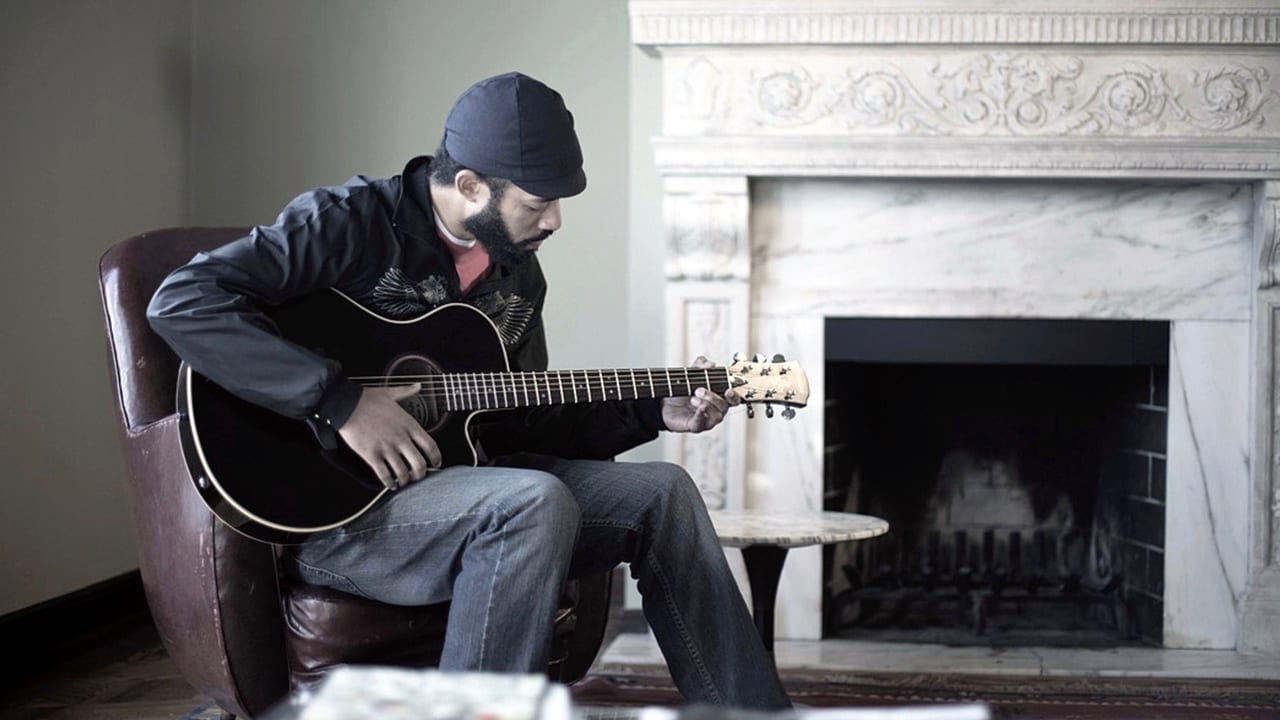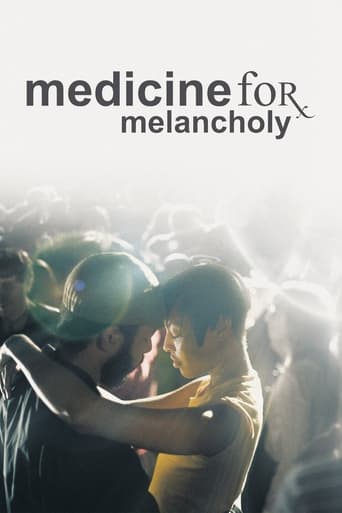



Although it has its amusing moments, in eneral the plot does not convince.
View MoreAll that we are seeing on the screen is happening with real people, real action sequences in the background, forcing the eye to watch as if we were there.
View MoreIt’s not bad or unwatchable but despite the amplitude of the spectacle, the end result is underwhelming.
View MoreOne of the worst ways to make a cult movie is to set out to make a cult movie.
View MoreI just watched this film on NetFlix. It was recommended by some critics online who saw the film awhile back and saying that it was a beautiful film. Riding high of the Oscar win, this film by Barry Jenkins was supposedly an inspiration which lead to the creation of Moonlight. I am always looking for undiscovered gems which I may not have seen before, to enjoy on days I have off of work. I am sorry to say, but maybe this film is just "too hip" for me. I have tried, and failed to what this film 3 times. Each time falling asleep while attempting to stay awake. The pale color pallet, the slow pace, the awkward dialog, make for a mix of great boredom. I am glad others found joy in this film, but I have found much better films online of the same nature.
View MoreFirst, a comment to the two reviewers who found this film 'slow,' etc;The pace of films - for MOST of the 20th century were at a much slower pace. It lets the director get to know the characters, etc.In today's film market - in which a HUGE part of the pie is overseas sales/distribution - dialogue doesn't translate, but, ACTIONS do.That's one of the reasons why most films of the past decade or so, have interchangeable plots, characters - the story is second to the action.Saying that, let me talk about MEDICINE FOR MELANCHOLY.I came in a few minutes after it had begun. I'd never seen, nor heard of it (my friend had left the TV on, and was actually watching something prior - FLAWLESS, with R. DeNiro.I came in when Micah was in a cab bringing the lost wallet he'd found back to it's owner, Jo (I know that they'd had casual sex just before this, and didn't know each other).I got caught up in the dialogue. It was slow. It as natural, as to how two people meet (awkwardly) at inopportune times. I quickly picked up on the ambivalence Jo' was having, and Micah, just trying (at first) to get to know Jo a bit.The film follows them throughout that day - and that night, as the two start to reveal more of themselves. A third important cast member, who's very important, is the sprawling city of San Francisco. I love the cinematography done on this film. It's a loving portrayal of San Francisco.The pair walk through streets, and neighbourhoods, that are far from the shiny images tourists see, or think of, when they hear the city's name.As for the performances of both the two (verbal) actors, I enjoyed their charisma, and I hope to see more from them in the future.MEDICINE FOR MELANCHOLY is not for people who are impatient, or 'don't get' plots. But, for those who enjoy spending an afternoon, and just letting a film wash over you, this one's definitely one to watch.
View MoreYou couldn't make a movie that looks more like my day to day life in San Francisco than this. Telling the story of two black twenty-somethings who meet and have a one night stand, they start off the morning after in Bernal Heights, walk over to Noe Valley for breakfast, hop a cab to the Marina to drop her off, then he heads back to his studio on Geary at Hyde, two blocks from where I once rented a nearly identical apartment, down to the rotating walk-in closet door that once sported a Murphy bed. The couple meet again and head to the Museum of the African Diaspora on Mission and then over to Yerba Buena Gardens to ride the merry-go-round, both a block away from where I work. Later that night they buy stuff for dinner at Rainbow Grocery then head down to the Knockout to dance while my pal DJ Paul Paul spins 45s although his oldies singles are overdubbed on the film's soundtrack with obscure but cool indie rock. But aside from the pleasure of seeing all my usual haunts captured on on film, or digital video rather, Medicine For Melancholy is a smart movie that captures not only the vibe of life in downtown San Francisco, but also the subtleties of the changing ethnic and economic demographics of the second most expensive city in the country. The guy—played by Wyatt Cenac, an occasional correspondent on John Stewart's Daily Show—has a deadpan quarrelsomeness that is occasionally hilarious, because not only is he concerned about the ongoing disenfranchisement of the black community in the city, he's also bugged about the pending disenfranchisement of himself from the girl's pants once her live-in boyfriend returns to town. Her boyfriend, by the way, is white, which Cenac's character tries to elevate to a political issue because of his looming romantic frustration, but she's not having it, which leads to one of the film's best exchanges as they argue about the role race plays in forming their sense of self-identity. Lots of clever relationship stuff, like surreptitiously scoping out each other's MySpace profiles and sharp naturalistic dialogue as they continually negotiate and renegotiate the emotional boundaries and ending point of their one day affair. And maybe the scene with the housing activists meeting was a digression, but you know what, if you live here that stuff is very important and on everybody's mind, and it fits nicely given the context of the film whether you like it or not. Highly recommended.
View MoreMicah (Wyatt Cenac) takes Joanne (Tracey Heggins) to the Museum of the African Diaspora on a Sunday afternoon. They woke up that morning in somebody else's house not knowing each other's names after a one-night stand at a party where they both got very drunk. It's San Francisco. They're black. They ride bikes. She was very unfriendly at first, not just because it was a drunken coupling but because she has a white curator boyfriend she lives with who just happens to be in London for the moment, but she loves him.The first part of this first film by Barry Jenkins, which is shot in digital video tuned to be almost but not quite totally drained of color (like the city, as we are to learn), with pale grays and very white whites, is sustained by Micah's efforts to make Joanne want to spend some time with him. He thinks they ought to get to know each other, and it's a Sunday. She's not at all interested at first. They're both hung over, after all. She lets him take her home in a taxi and then just gets out and runs. But she leaves her wallet on the floor. To go back and find her it takes a search, on his bike, across town, because the address on her license isn't current. The film is also sustained by being very specifically shot in San Francisco. When Joanne goes to a gallery to run an errand it's a very specific gallery. The Museum of the African Diaspora is the Museum of the African Diaspora. The light is San Francisco light. Micah and Joanne are young urban sophisticates. That, as Micah points out, is not only specific but makes them a small minority of a small minority, because gentrification has shrunk the city's blacks to 7% of the city population (New York's proportion is 28%).Later buying groceries for dinner at his place (because Micah succeeds and Joanne does spend the day with him, and more) they happen upon a group discussing what appears to be the imminent banishment of rent control in San Francisco. Is Jenkins lecturing us, or just treading water? It doesn't matter so much, because the interactions of Micah and Joanne and the wry, cautious words they use when they talk to each other remain central, and are as specific and accurate to who they are (if not to San Francisco) as the cityscapes and the special light. These two fine actors and this sensitive filmmaker certainly know how to make it real and to record how unpredictably things change from minute to minute. When Micah takes Joanne to the museum, instead of SFMoMA (her original suggestion), and then to the Martin Luther King Memorial at Yerba Buena Center, maybe it's turning into a pretty cool date. But when he leads her over a little bridge there and says, "This is like LA," she just rather coldly says, "Never been," and then, rubbing it in once more and pulling back, "This is a one-night stand." A ride on the merry-go-round at Yerba Buena, she seems to be saying, isn't going to change anything. This delicate homage to a moment is also a rueful acknowledgment of how hard it is to change the way things are.And it has to be a bit of a lecture, because Micah is "born and raised," while Joanne is a "transplant," and he wants to remind her how the Fillmore and the Lower Haight were wiped out in the Sixties in "Urban Redevelopment:" goodbye black people, goodbye white artists. Micah lives in an immaculate little apartment in the Tenderloin. Micah, as the voice of Barry Jenkins, wants to reclaim San Francisco for everyday people. Actually, Micah and Joanne seem like a perfect couple. Maybe that's why they can't be together, except just for this one day? You want to just shout out to them, "Can't you just be friends?" They fit so well together. Is this 'Medicine for Melancholy' or just 'melancholy'? Maybe it's medicine 'and' melancholy. That must be it. A fine little lyric of people and a place. And wholly without cliché except maybe for the tagline: "A night they barely remember becomes a day they'll never forget. " Seen at the San Francisco International Film Festival 2008. This had its debut at SXSW, the South by Southwest Interactive event in Austin, Texas. 'Medicine for Melancholy' tied for the Audience Award for Best Narrative Feature in San Francisco with Rodrigo Pla's 'La Zona.'
View More